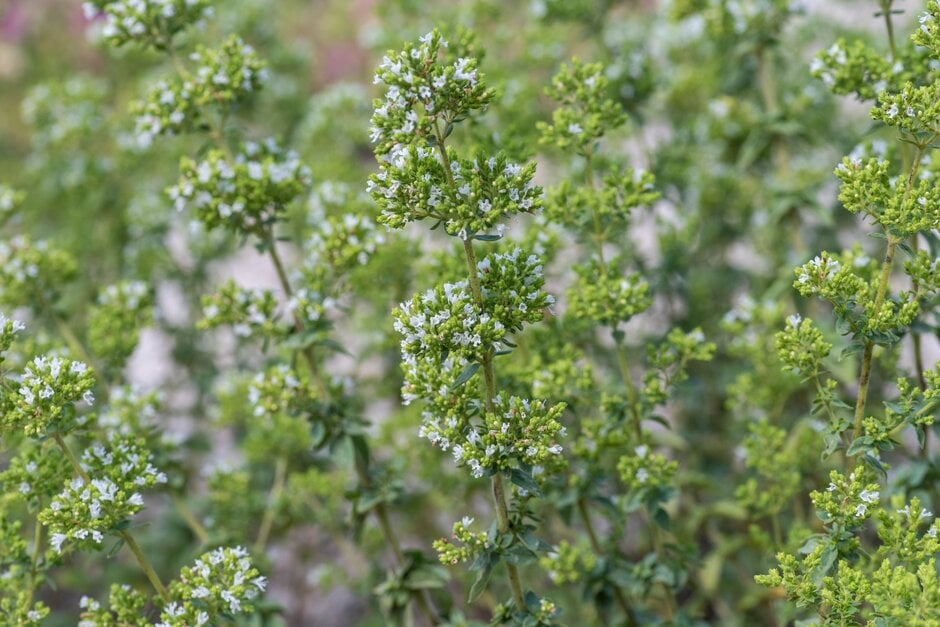Size
Ultimate height
0.1–0.5 metresTime to ultimate height
2–5 yearsUltimate spread
0.1–0.5 metresGrowing conditions
Moisture
Well–drainedpH
Acid, Alkaline, NeutralColour & scent
| Stem | Flower | Foliage | Fruit | |
| Spring | Green Grey Silver | |||
|---|---|---|---|---|
| Summer | White Purple | Green Grey Silver | ||
| Autumn | Green Grey Silver | |||
| Winter |
Position
- Full sun
- Partial shade
Aspect
East–facing or North–facing or South–facing or West–facing
Exposure
Exposed or Sheltered Hardiness
H5Botanical details
- Family
- Lamiaceae
- Native to GB / Ireland
- No
- Foliage
- Deciduous
- Habit
- Clump forming
- Genus
Origanum may be herbaceous perennials or deciduous or evergreen sub-shrubs, with aromatic foliage and spikes of small tubular flowers usually with conspicuous bracts
- Name status
Unresolved
How to grow
Cultivation
Grow in any well drained, alkaline soil in full sun. Perfectly suited to container growing. See oregano cultivation for more information This plant was included in the RHS Origanum (oregano and marjoram) trial 2022-2023 https://www.rhs.org.uk/plants/trials-awards/plant-trial-results/origanum
Propagation
Propagate by division in spring or autumn
Suggested planting locations and garden types
- City and courtyard gardens
- Cottage and informal garden
- Mediterranean climate plants
- Patio and container plants
- Wildlife gardens
Pruning
Cut back spent flower stems in early spring. If growing for culinary use, remove flowers stems before flowers open to encourage leaf growth
Pests
May be susceptible to leafhoppers
Diseases
Generally disease-free
Get involved
The Royal Horticultural Society is the UK’s leading gardening charity. We aim to enrich everyone’s life through plants, and make the UK a greener and more beautiful place.
